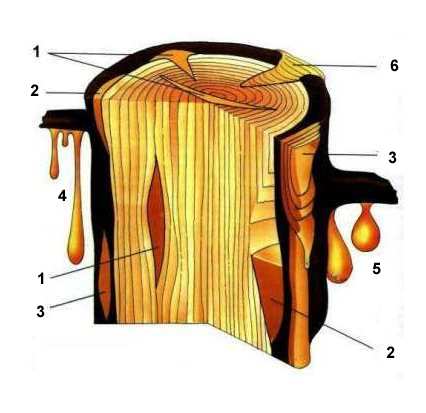Amber has very different shapes: small droplets,
similar to fresh honey drops, or large pieces, like a human brain, a
skull or an egg.
Observing natural pieces of amber we understand the
way resin was dripping, dropping or gliding. Some pieces of amber have a
regular shape of a drop, others hardened into icicles, much of resin
moved down a trunk, and hardened into lumps or got collected under a
bark or just in a trunk.
The form and the structure of amber was mainly
determined by the formation of resin tank and change of the nature of
the place. There are two morphologic species of amber: interior and
exterior amber. Interior amber was formed from initial resin in various parts of bark and wood. Exterior amber
was formed by outpoured resin along the surface. Interior amber
morphological variants are wooden lenses, under-bark lenses and bark
amber. Exterior amber - amber icicles, amber drops and trunk amber.
Good-looking morphologic species of amber are rare.
Only fragments of them broken and rubbed are usually found. Knowing
their own features it is easy to define the species.

Interior amber:
Wooden lenses are transparent because their resins were pressed tightly and isolated from the exterior impact.
Under-bark lenses were formed when
resins flowed under a bark, which torn off a wood. Under-bark cavity
formed their contours. The imprints of cambium fibrous tissue are always
found on the surface of under-bark lenses.
Bark amber was formed in a thick
amberwood bark when its laminas moved aside. The bark amber lenses have a
very specific irregular shape with cut brims, which were formed by the
contours of bark laminas that moved apart. The imprints in both sides
are characteristic to them: emerged-in one side, sunken in the same
shape-in another side.
Exterior amber:
Amber icicles are divided into
micro-and macro-icicles. Micro-icicles are "amber in amber"-first
outpoured dozes of resin preserved in macro-icicles – the rudiments of
massive icicles. Macro-icicles were formed when resin flowed uniformly
from a wounded piece of a tree. Macro-icicles are the main receptacle of
vegetable and animal remains; more than 95% of all inclusions are found
in macro-icicles. Most icicles have clear striking signs, which mean
they were hanging on thin branches (2-8cm in diameter).
Amber drops are the overdose of
resin that broke away from the streams, which used to flow through
icicles and trunk. They can be of different size; various conservation
and deformed structure. Drops flattened when falling are most frequently
found (about 30 %). Drops of regular shape are very rare, they might
have formed when resin flowed from slits of wood or when they fell into
the water.
Trunk amber is morphologic amber
species, which is the most plentiful and various. Resin that outpoured
on the surface of a trunk made big accumulations that flowed down
slowly. Under the heat of the sun they have melted and hardened for many
times. Some volatile components emitted because of heat, but not all
gases could volatilize from marshy resins mass. Different colours mixed
when resins were flowing down a trunk, that is why superficial amber
obtained a texture of various colours. The biggest pieces of amber that
were found are trunk amber (weigh several kilograms).














